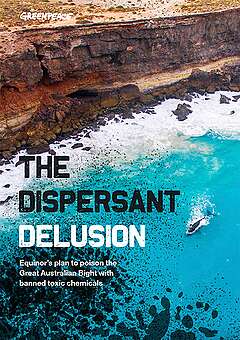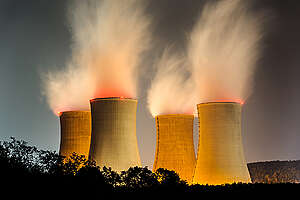
Our report shows that regulators plan to allow Equinor to respond to an oil spill in the Great Australian Bight by deploying a banned chemical cocktail that doesn’t work and is toxic to humans and marine life.
Equinor’s plans, due to be ruled on by the regulator next week, include the use of Corexit 9500, which was widely used in the Deepwater Horizon disaster. Corexit 9500 was banned in Australia in 2012 after evidence came to light of its toxic effects on response workers and the environment.
Executive summary of the report:
- Oil companies in Australia have stockpiled over 350 tonnes of oil dispersants, including Corexit 9500, which are toxic chemicals used to clean up oil spills. However, Corexit is no longer permitted in Australia, because studies show it harms people and marine life. Despite this, approval has been given for oil companies to spray the banned substance into the environment until existing stores are exhausted.
- Equinor plans to use Australia’s stockpile of Corexit dispersant, and others like it, to respond to catastrophic oil spills in the Great Australian Bight, as well as shipping in thousands of tonnes of dispersants from overseas. However, Equinor’s Environment Plan has not defined how its use of dispersants will affect the environment.
- Following the Deepwater Horizon disaster in 2010, 6.9 million litres of dispersants were sprayed onto the surface of the spill as well as injected directly into the erupting well-head. Yet, this was done without prior research to determine what levels of exposure would be harmful to humans or marine life.
- Since 2010, studies have demonstrated that Corexit and other dispersants harm whales and other marine mammals, fish, crustaceans, plankton, corals, and the workers and fishers who respond to the spill.


